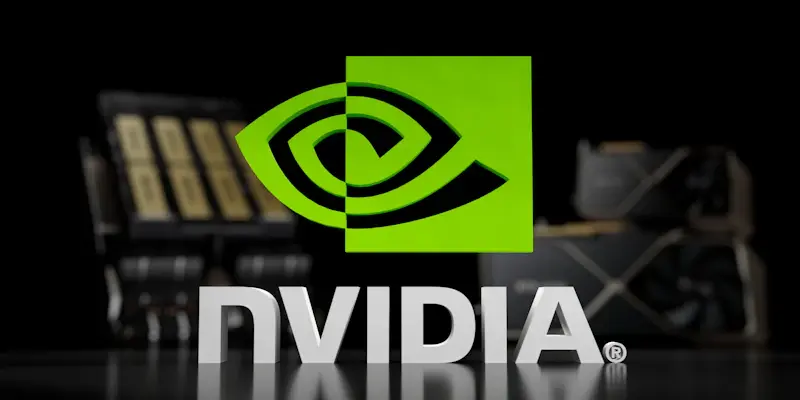As the world continues to advance in wireless communication technology, Nvidia is making significant strides towards shaping the future of 6G networks. By strategically incorporating artificial intelligence (AI) into the emerging 6G infrastructure, Nvidia is taking deliberate steps to ensure its technology plays a pivotal role. Collaborations with major industry players such as T-Mobile, MITRE, Cisco, ODC, and Booz Allen Hamilton underline the seriousness of their efforts. This initiative follows the launch of Nvidia’s 6G research cloud platform presented at the recent GTC conference.
Nvidia’s AI-Native Network Stack Development
Key Partnerships and Collaborations
Nvidia’s collaboration with prominent companies like T-Mobile, MITRE, Cisco, ODC, and Booz Allen Hamilton is aimed at developing an AI-native network stack specifically for 6G. The platform for this development is Nvidia’s own AI Aerial platform, which is designed to integrate AI functions seamlessly into network operations. This collaboration indicates Nvidia’s intention to influence the foundational structure of 6G networks, ensuring that AI capabilities are ingrained from the outset.
Furthermore, analysts believe that Nvidia’s early focus on AI integration is a strategic maneuver to establish its preferred technologies, particularly GPUs, as a standard component of 6G infrastructure. By collaborating with these leading companies, Nvidia is positioning itself as a key player in the upcoming release of 3GPP’s standards, expected by 2028. Such early involvement offers them a significant advantage in shaping the technology landscape to align with their capabilities.
Addressing Critical Questions in AI Integration
To achieve this ambitious goal, Nvidia is addressing critical questions regarding how AI will be implemented within 6G. This involves understanding the technical requirements, possible challenges, and potential advantages of integrating AI deeply into network operations. Analysts emphasize that aligning AI’s role with 6G standards could transform current infrastructure, traditionally reliant on x86 chips and custom ASICs, to one favoring Nvidia’s GPUs. Tackling issues such as cost, complexity, and power consumption head-on is crucial in making AI an integral part of 6G.
The exclusion of major Radio Access Network (RAN) vendors from Nvidia’s latest collaboration highlights their specific target in the market. While certain collaborations with companies like Ericsson and Nokia have shown some progress, significant challenges persist. The AI RAN setups particularly pose concerns in terms of cost and efficiency, thereby requiring innovative solutions to overcome these hurdles. Nonetheless, Nvidia’s proactive approach could fundamentally redefine the relationship between AI and the future of wireless networks.
Strategic Positioning and Market Influence
Shaping Future Standards
Nvidia’s overarching goal is to establish its AI technology as a cornerstone of the forthcoming 6G framework. By leveraging early involvement and strategic partnerships, Nvidia aims to shape the standards and guidelines that will govern 6G technology. This concerted effort by Nvidia to participate in the early stages of 6G’s development could result in their hardware and software becoming intrinsic components of future wireless network infrastructures.
Despite some skepticism from industry analysts regarding the widespread adoption of Nvidia’s specific AI hardware, the significant influence of AI on 6G remains uncontested. Even though Nvidia’s exact technology may not become the industry norm, the direction towards an AI-driven future for wireless networks is clear. The momentum generated by Nvidia’s initiatives can drive further development and cooperation among other major industry players like Intel and Qualcomm, ensuring that AI-native wireless networks become a reality.
Challenges and Future Considerations
While Nvidia’s strategy shows promise, various challenges lie ahead. One of the primary concerns is the high cost and complexity associated with AI RAN deployments. These issues require substantial innovation and efficiency improvements to make AI integration viable from both a technical and economic standpoint. Additionally, power consumption remains a critical factor, especially as AI operations can substantially increase energy requirements. Addressing these concerns will be essential for the successful integration of AI into 6G networks.
Moreover, the competitive landscape of the telecommunications industry means that Nvidia must continuously adapt and innovate. Collaboration with other tech giants and stakeholders will be critical in maintaining momentum and achieving shared goals. As these developments unfold, Nvidia’s proactive stance is likely to catalyze significant advancements in AI and wireless communication technologies.
Nvidia’s Role in the Evolution of 6G
As the world makes rapid progress in wireless communication technology, Nvidia is making noteworthy advancements in shaping the future of 6G networks. By intentionally integrating artificial intelligence (AI) into the evolving 6G framework, Nvidia is taking calculated steps to ensure its technology becomes a crucial element in its development. Collaborations with leading industry giants such as T-Mobile, MITRE, Cisco, ODC, and Booz Allen Hamilton emphasize the commitment and seriousness of their efforts. This movement aligns with the introduction of Nvidia’s 6G research cloud platform unveiled at the recent GTC conference, showcasing their dedication to innovation. These strategic partnerships and initiatives are aimed at driving innovation and setting new standards in the communications landscape. Through these endeavors, Nvidia is positioning itself at the forefront of the next generation of wireless connectivity, ensuring it plays a fundamental role in the 6G revolution.

